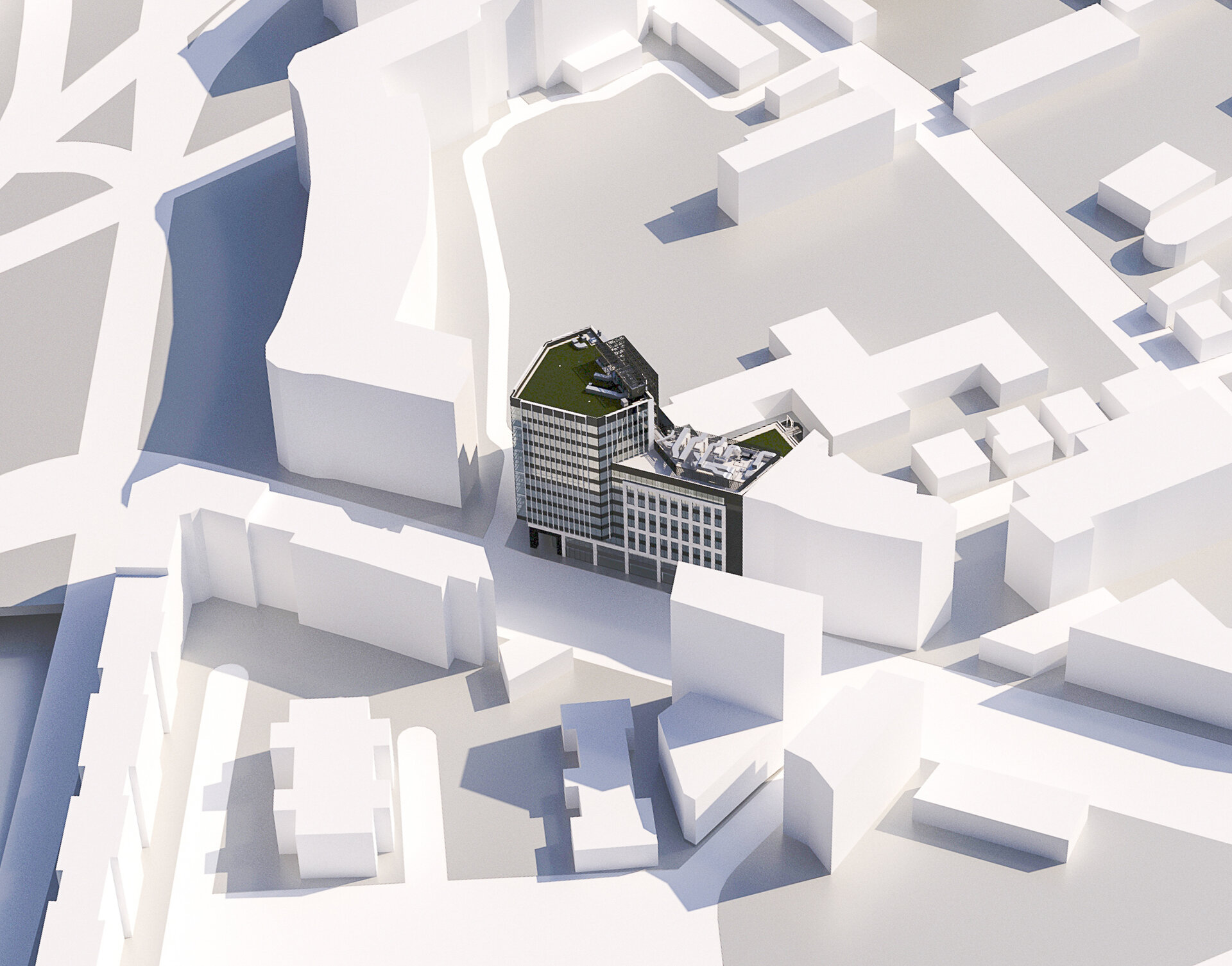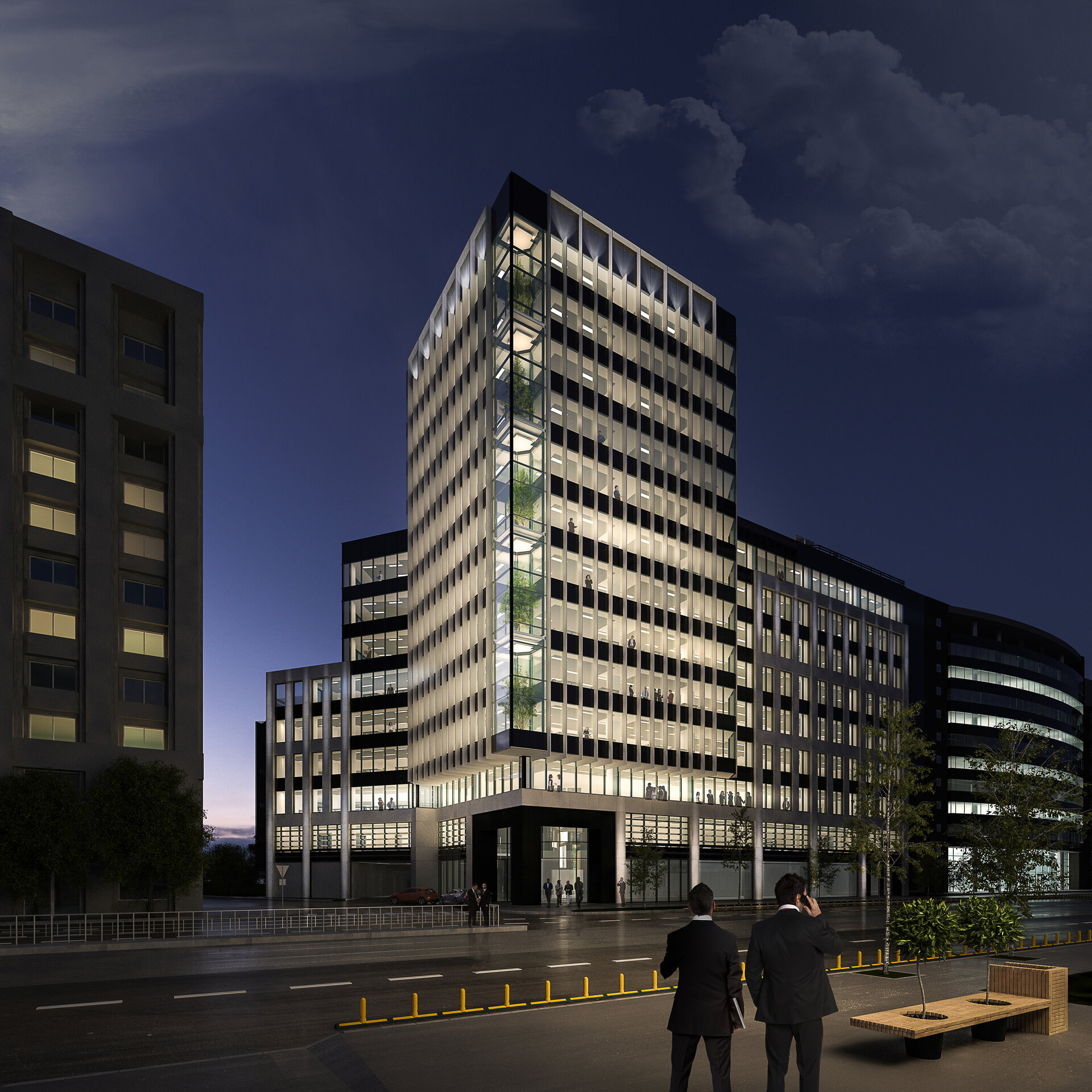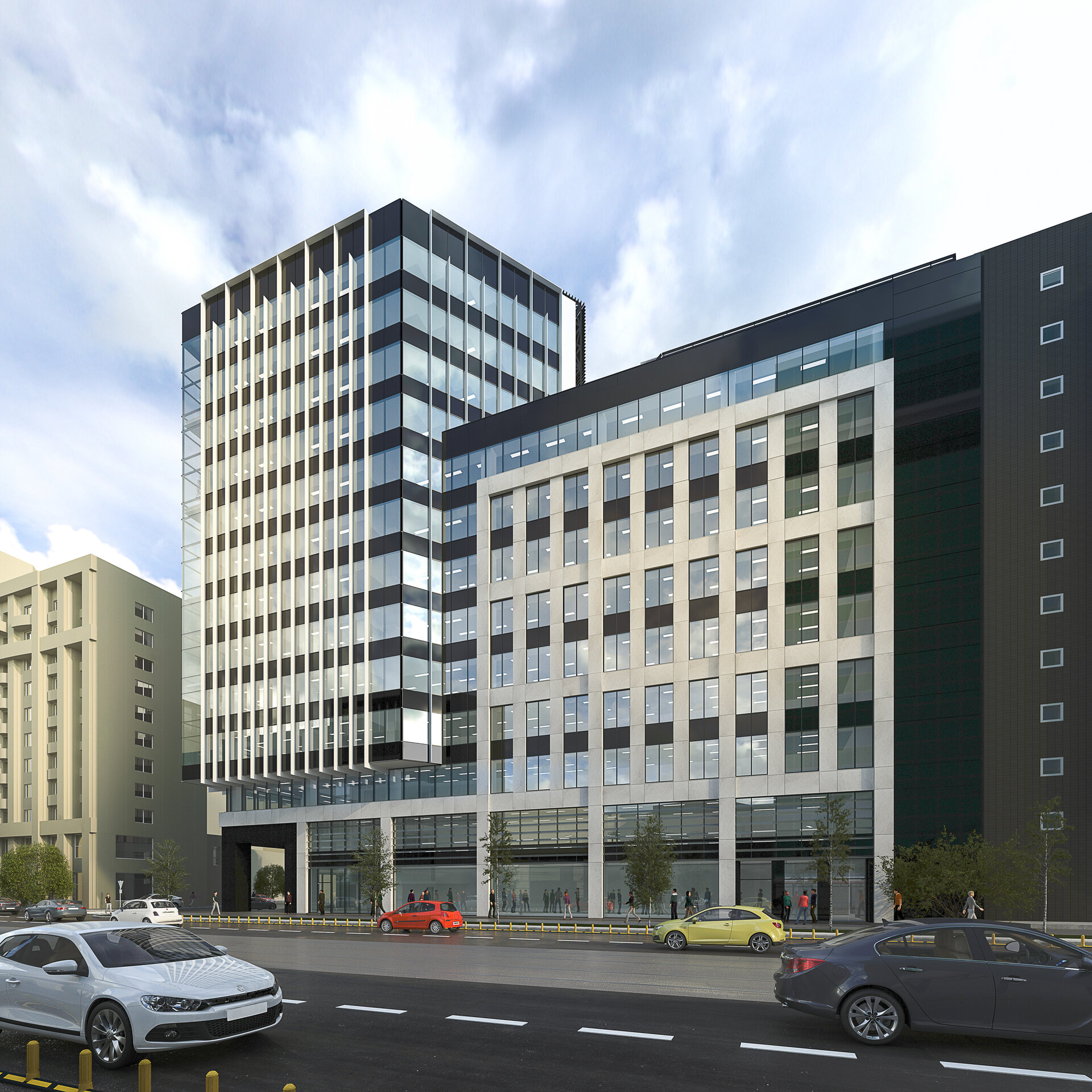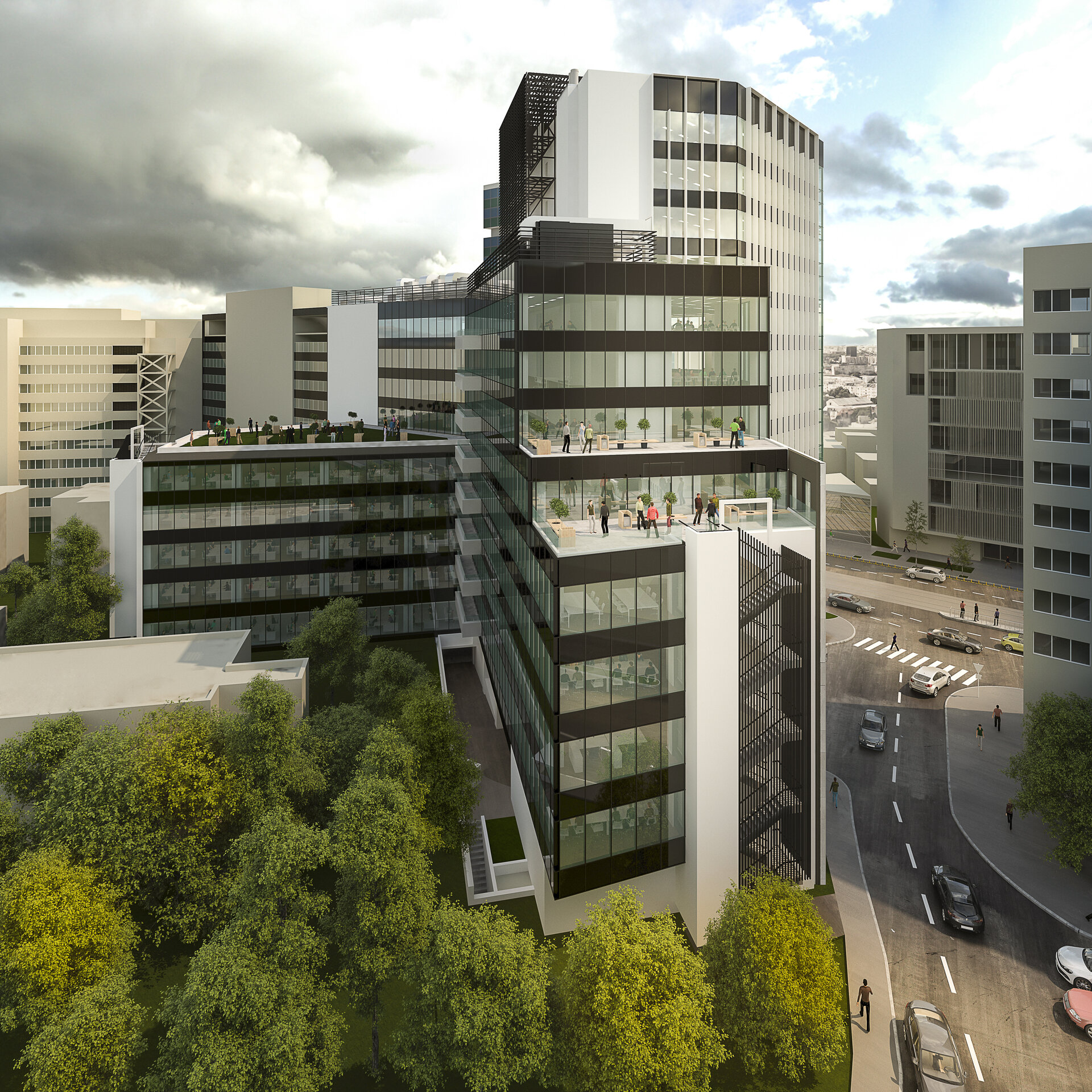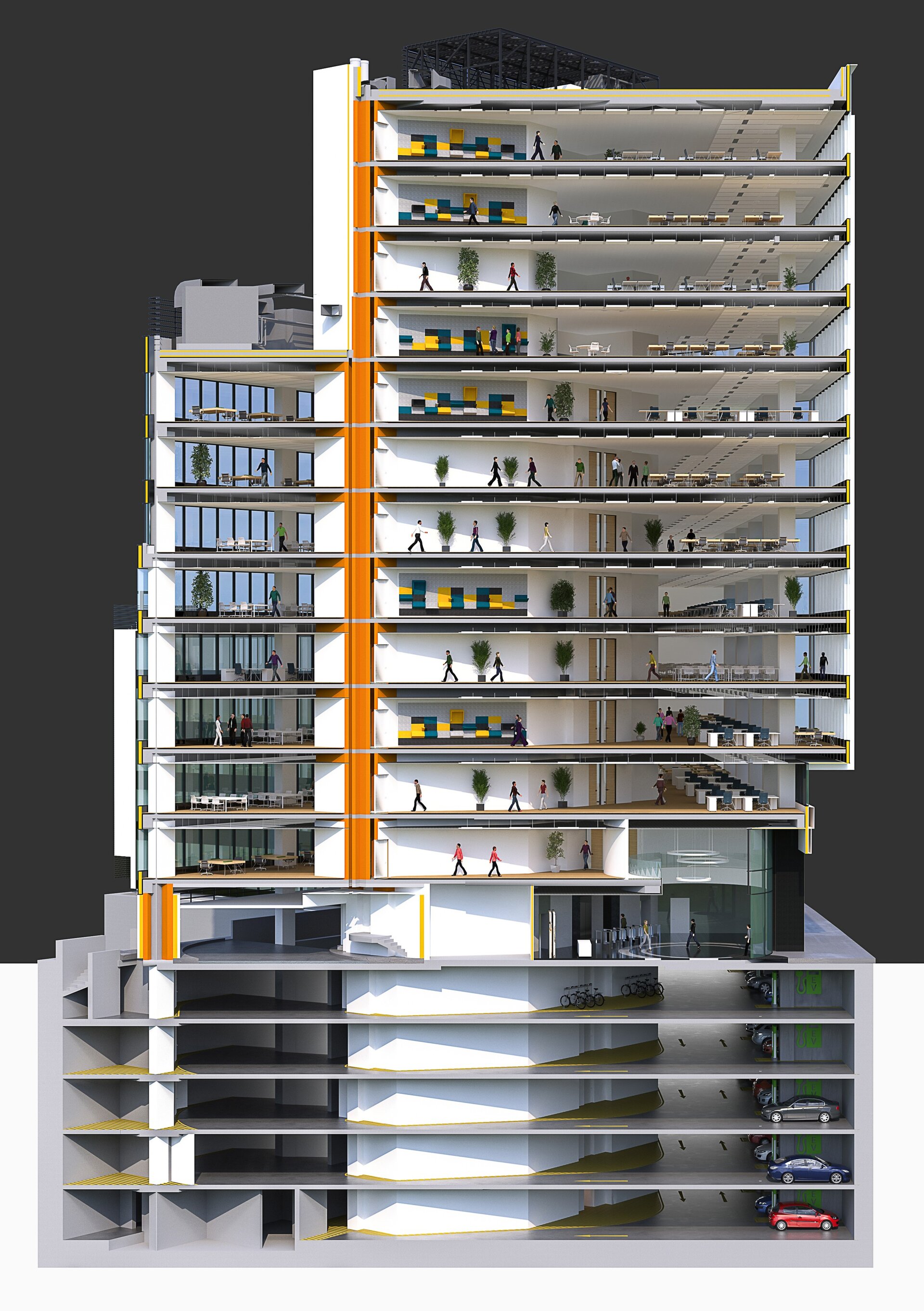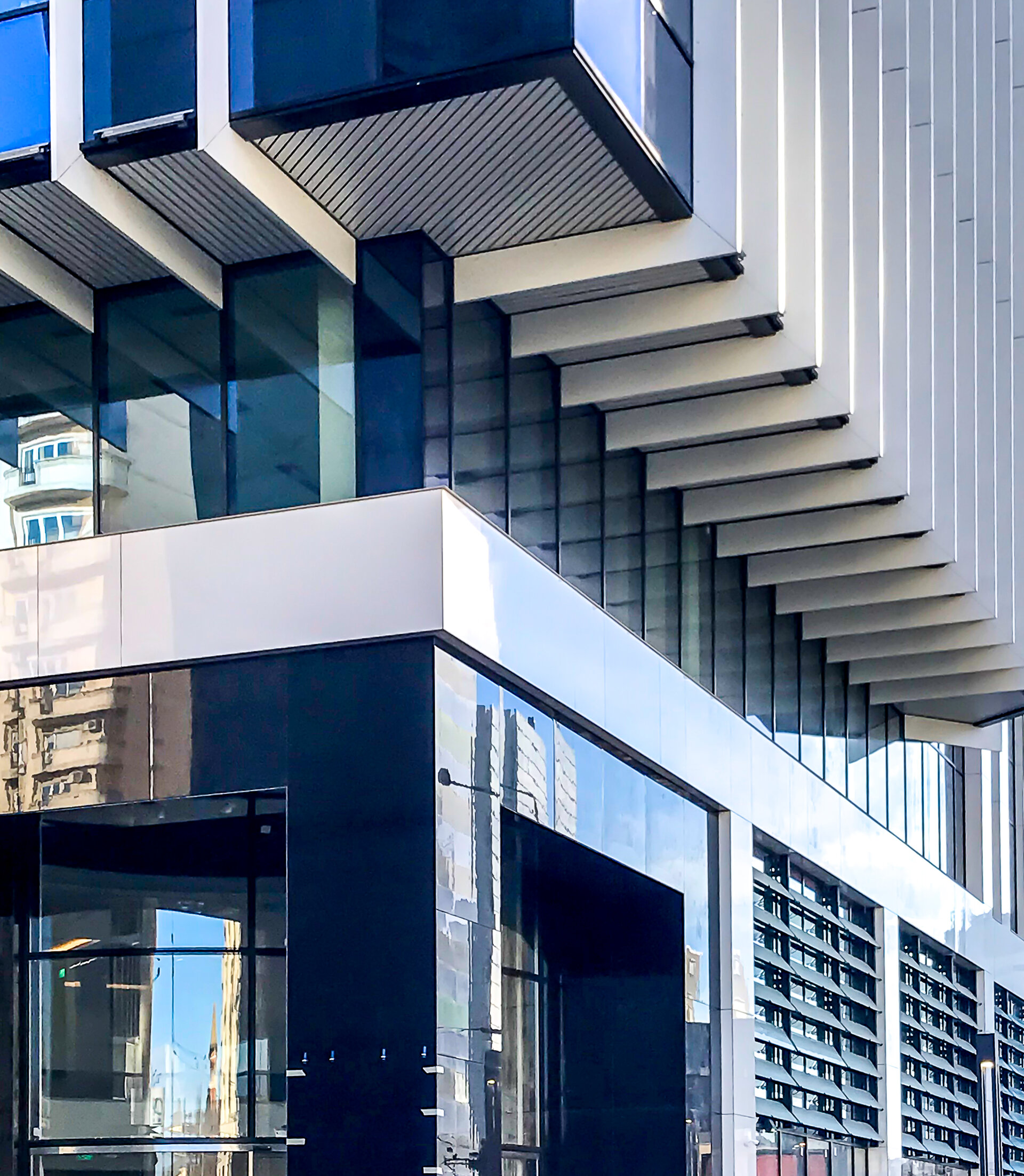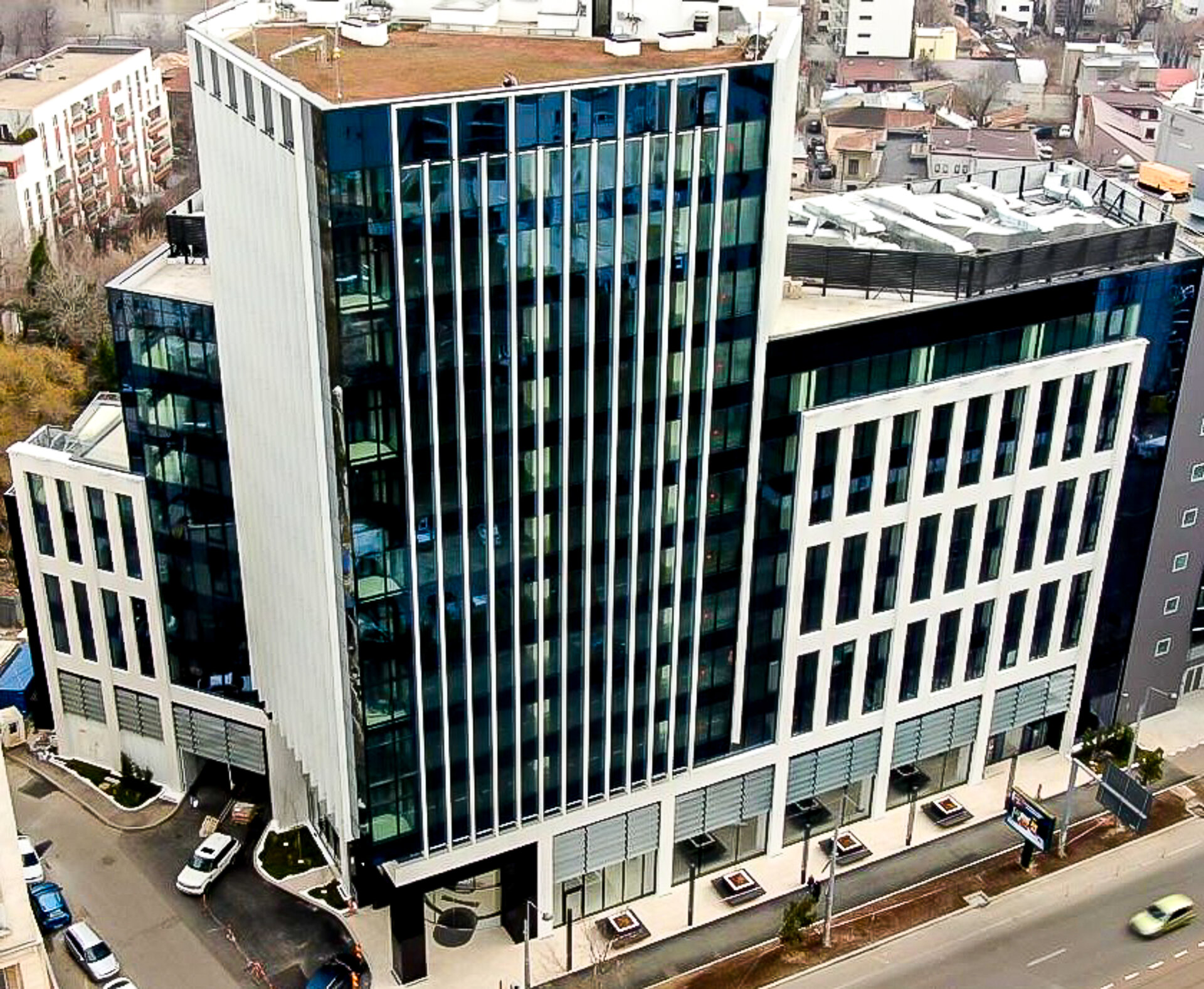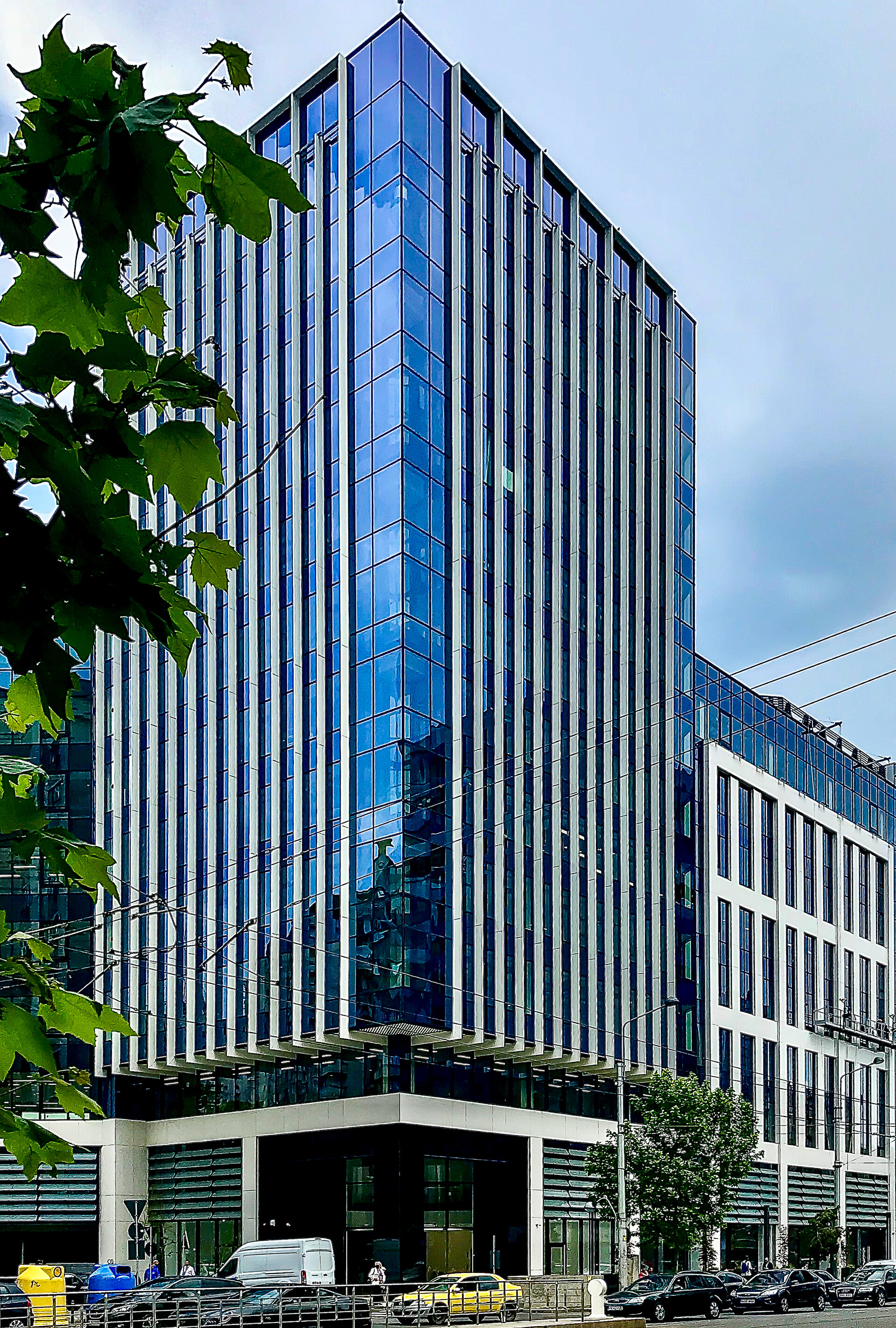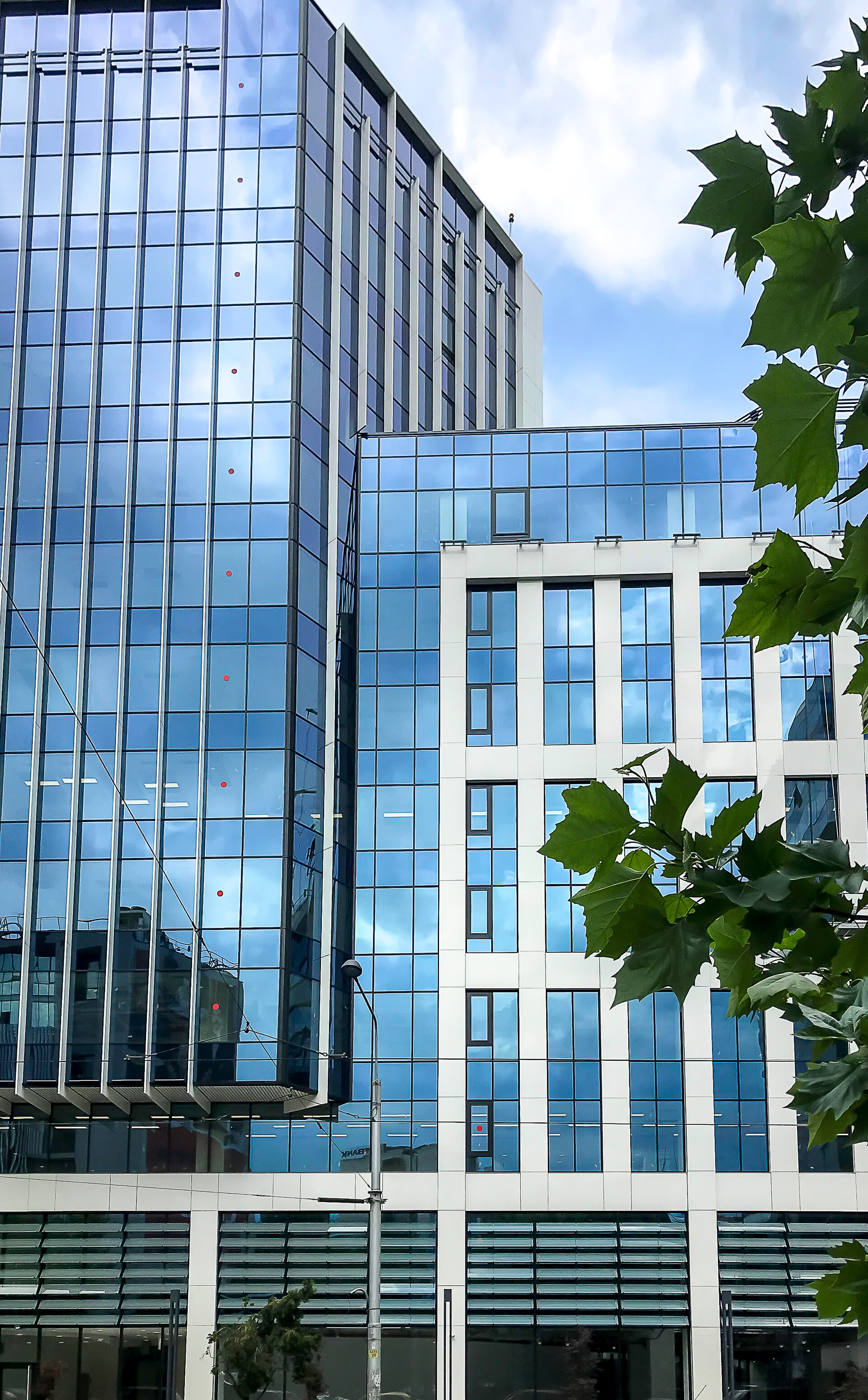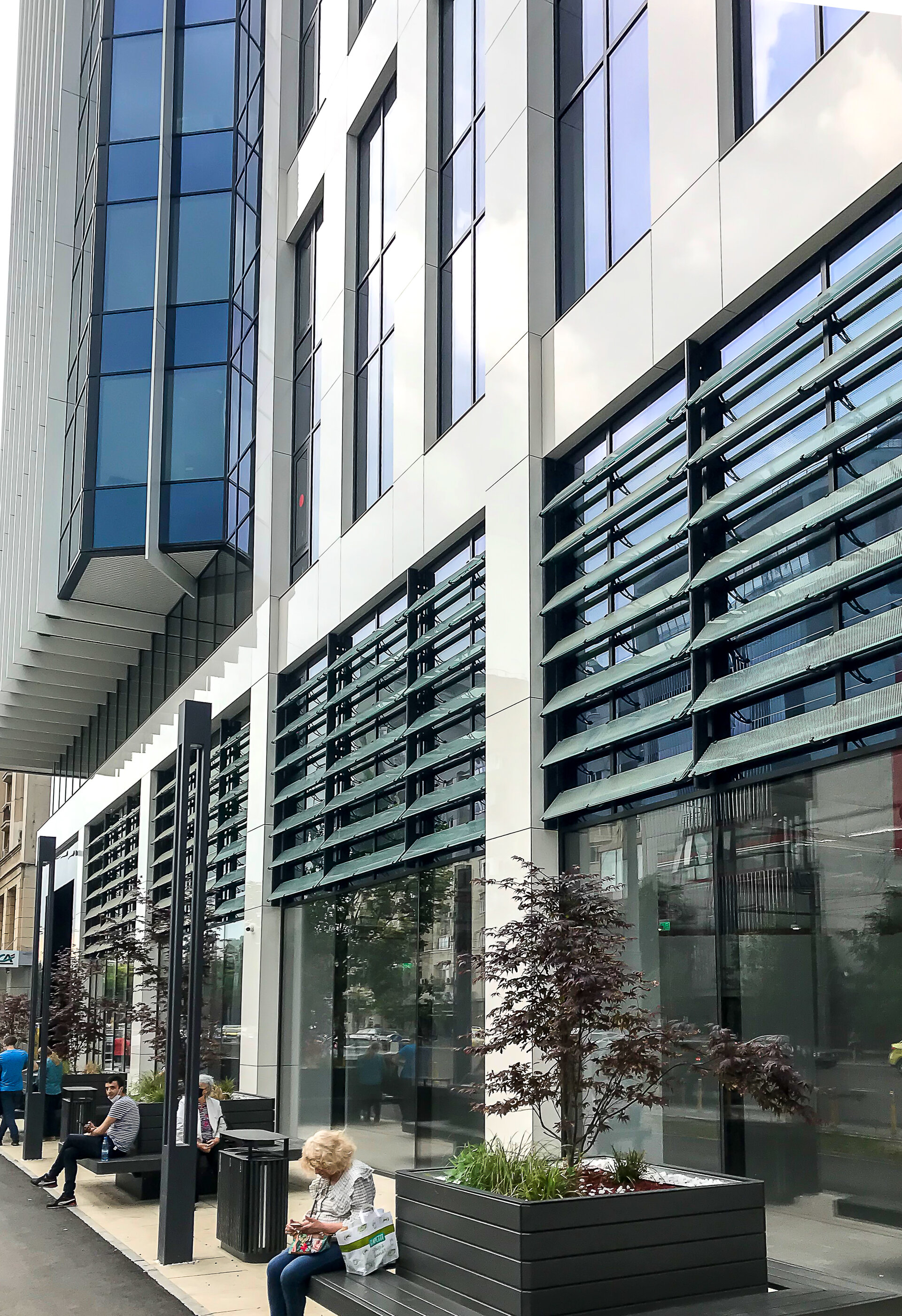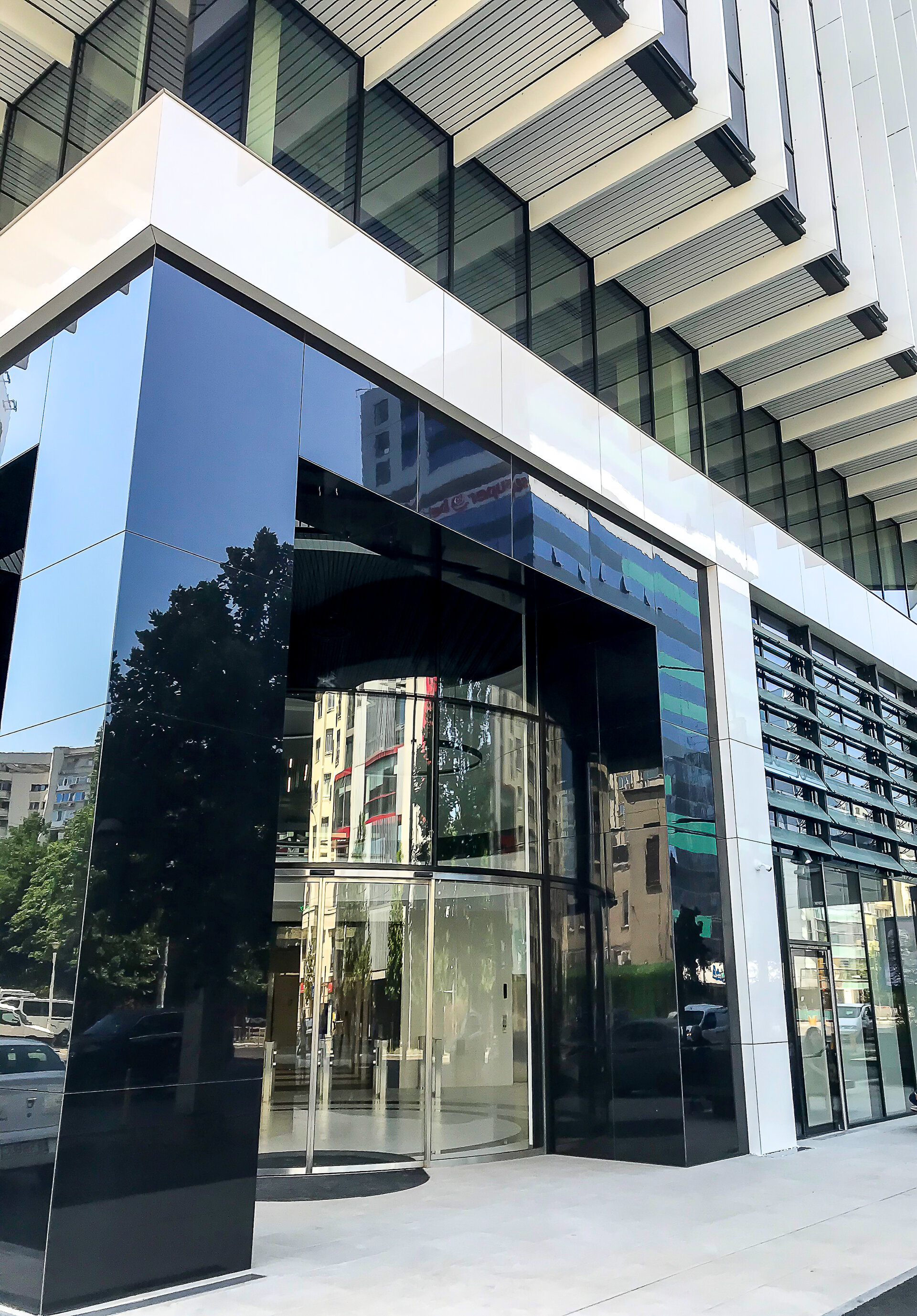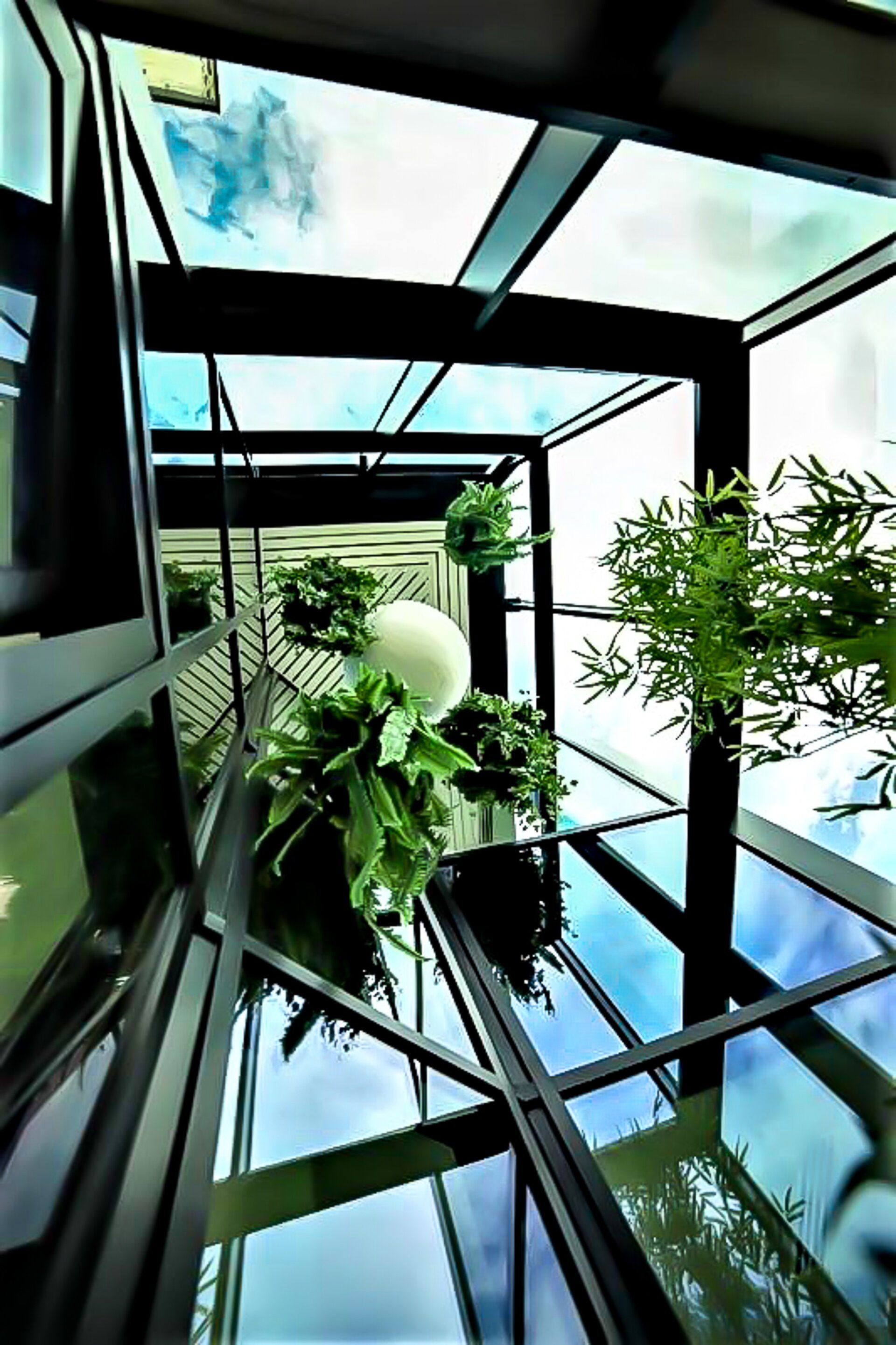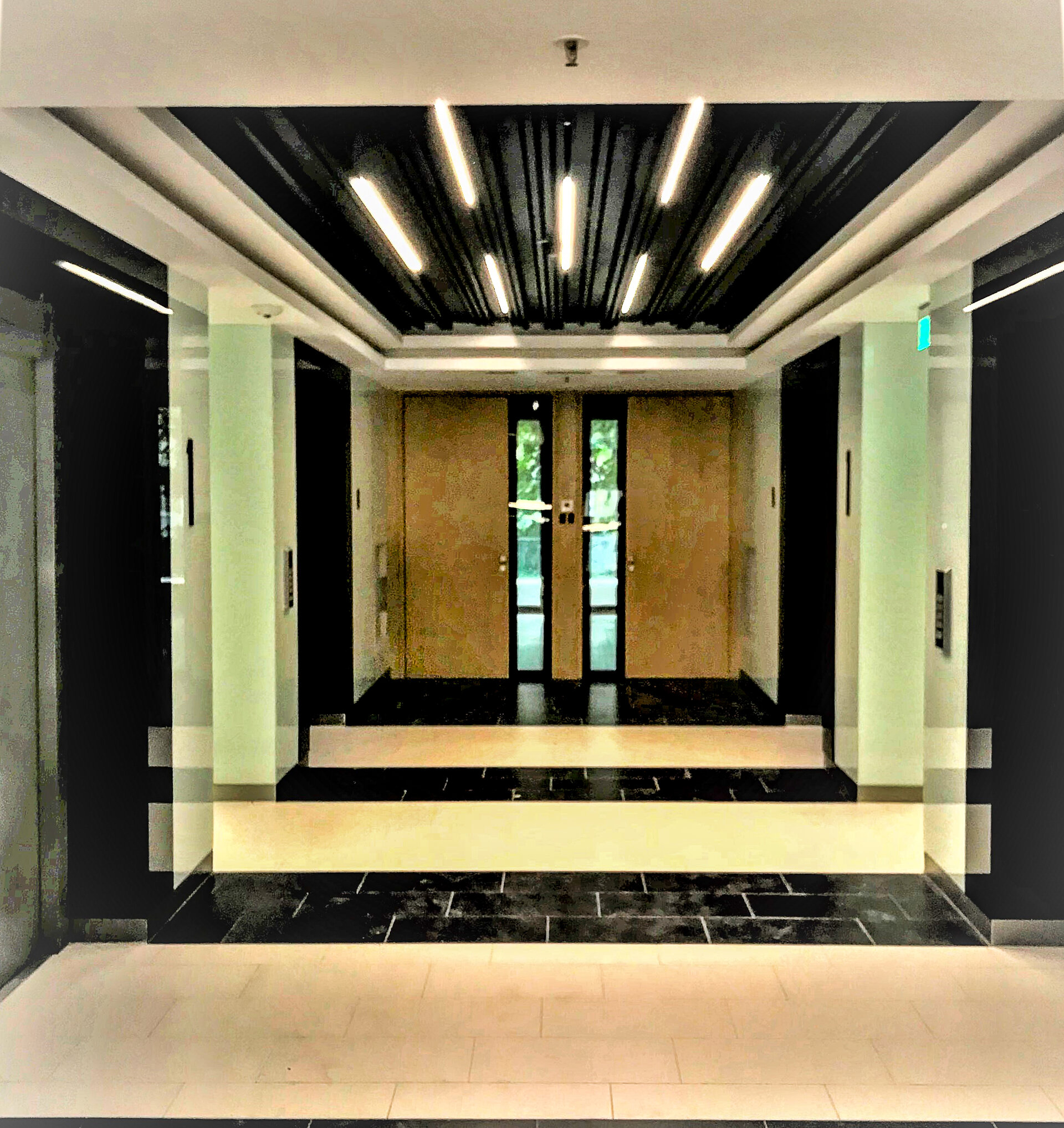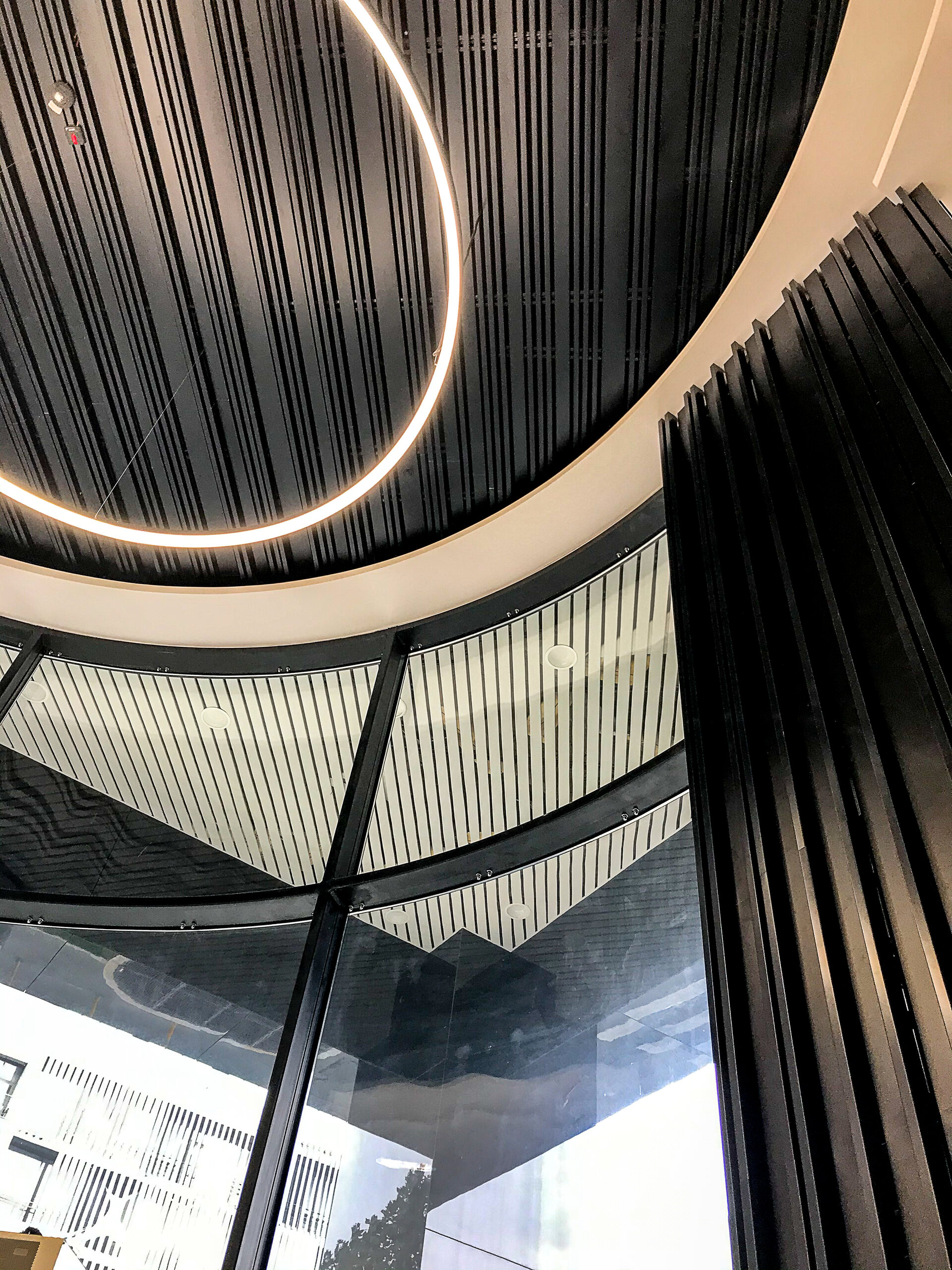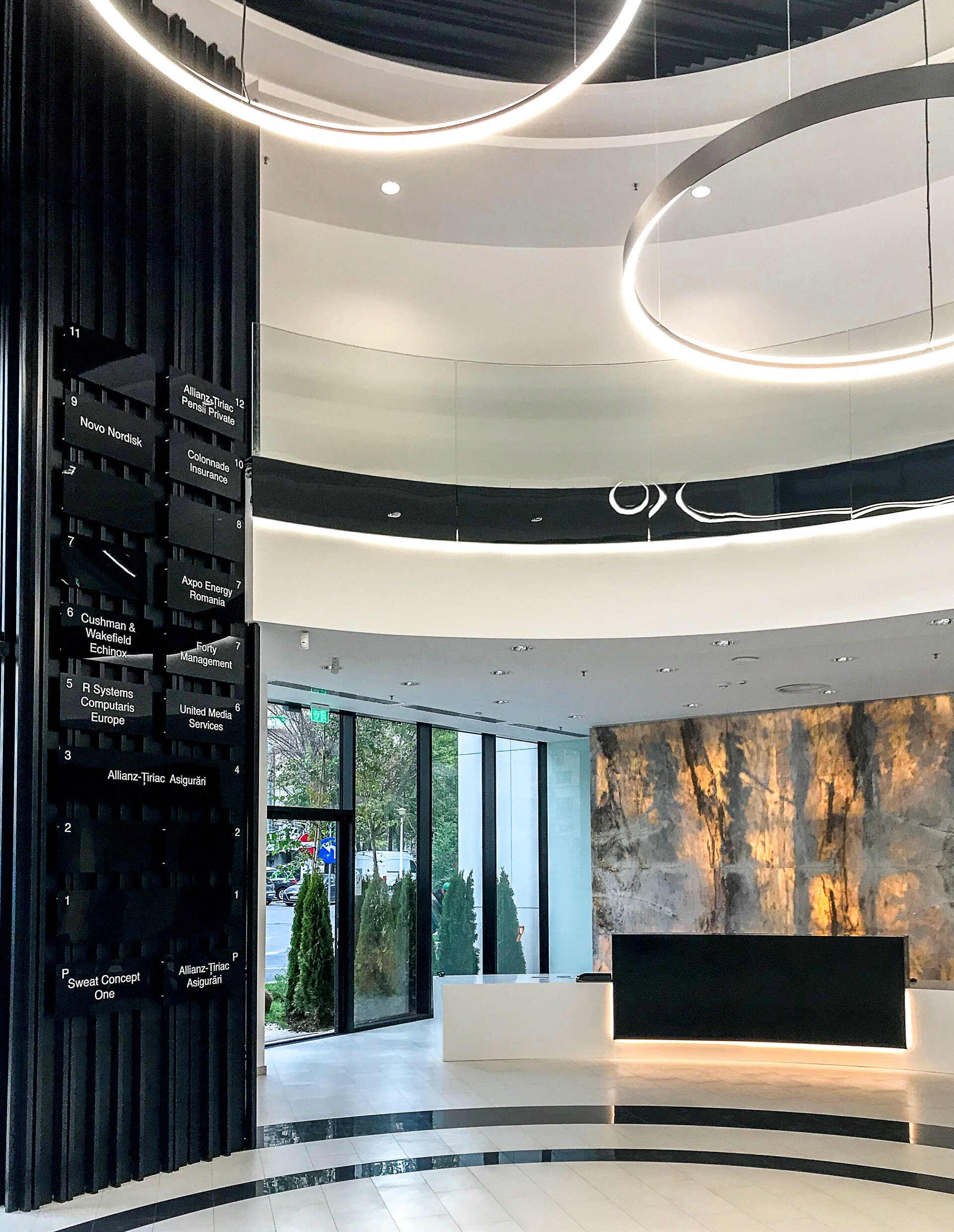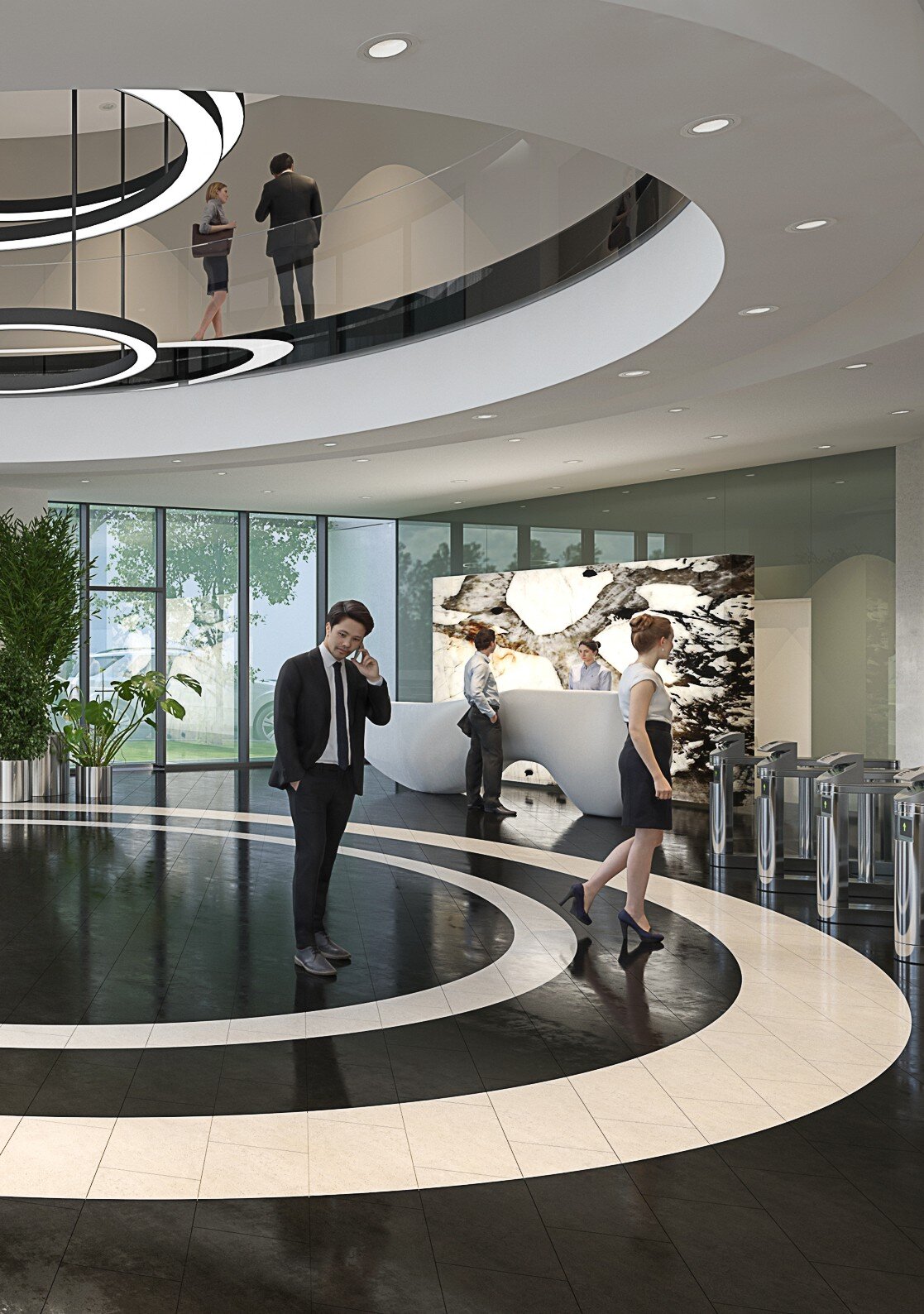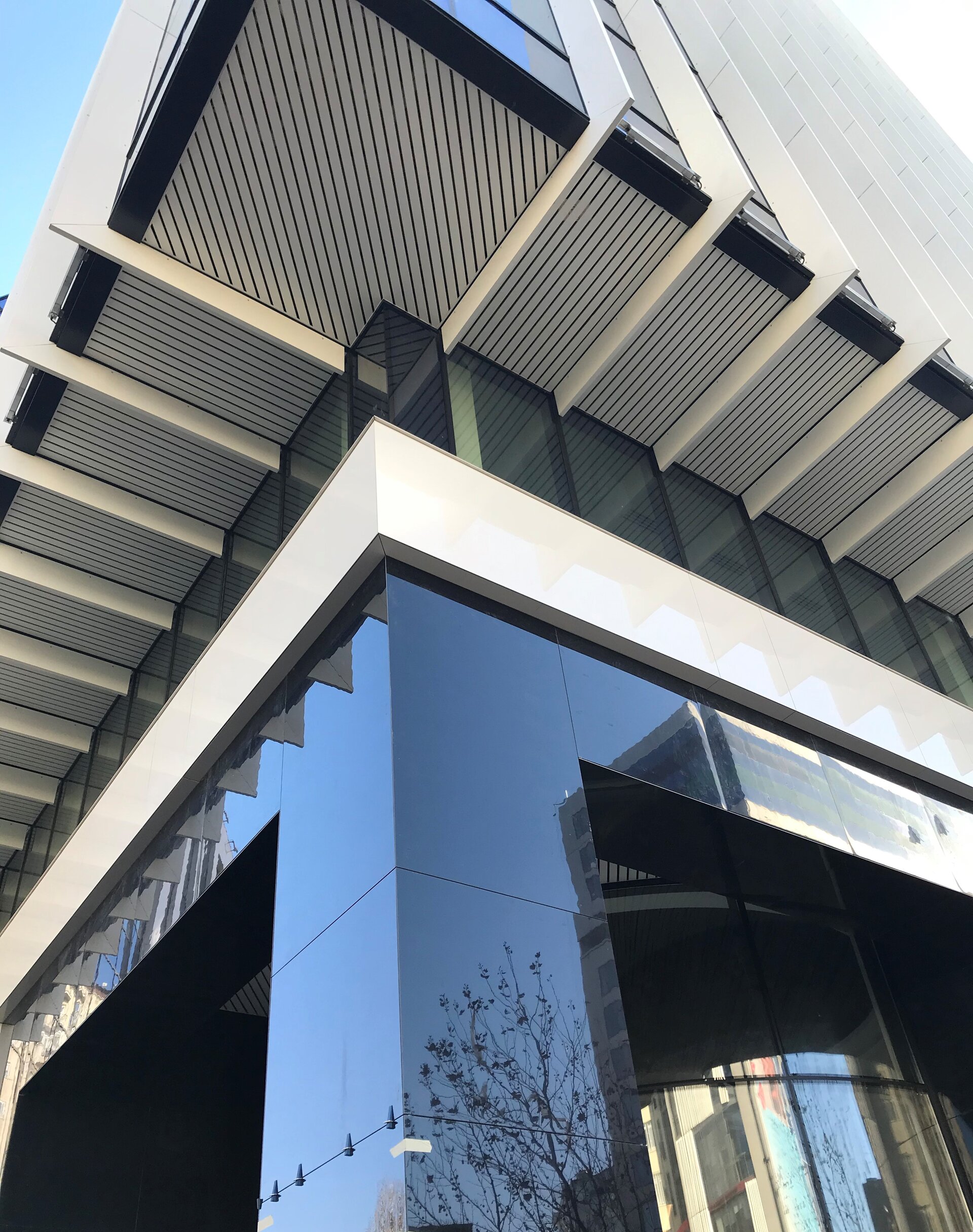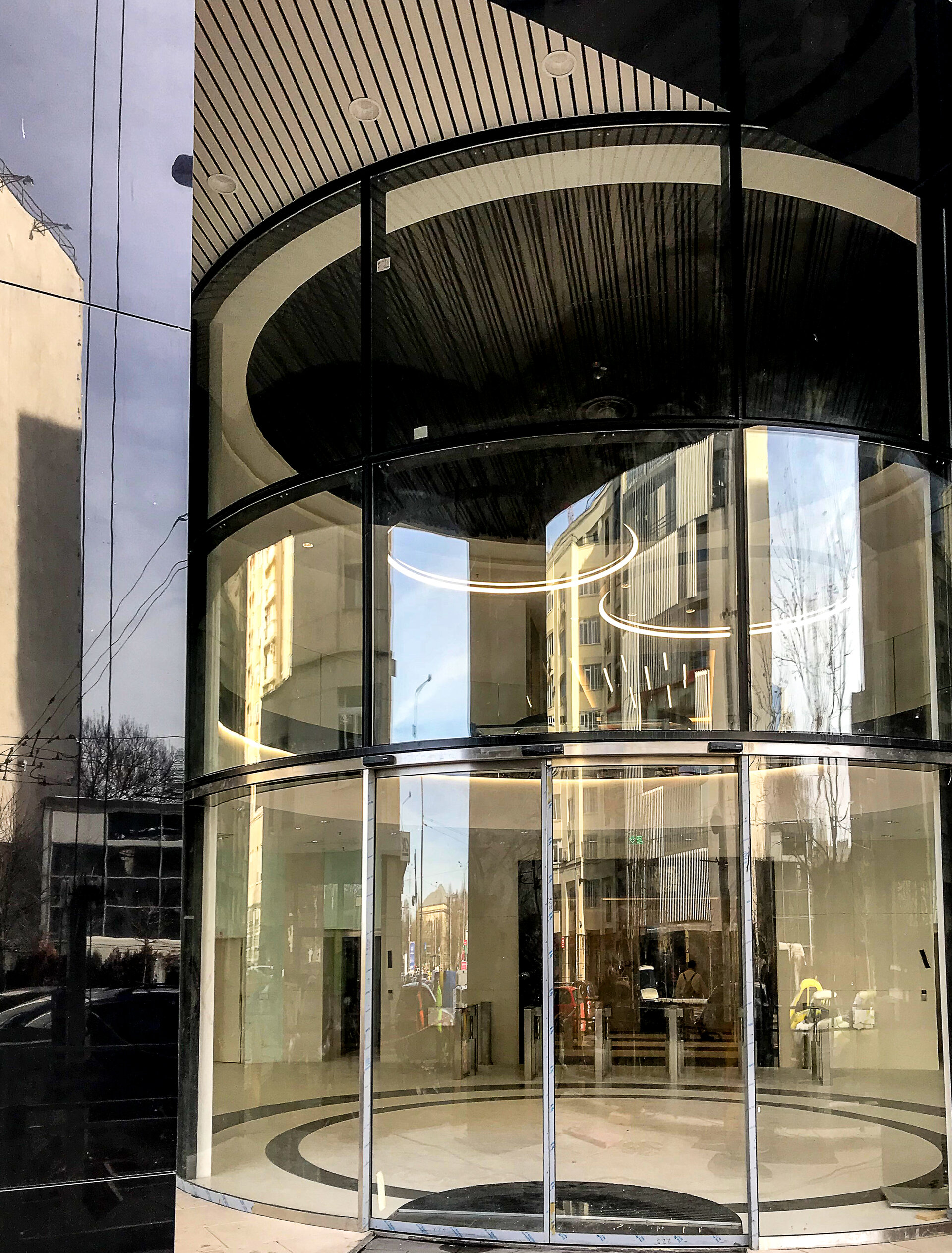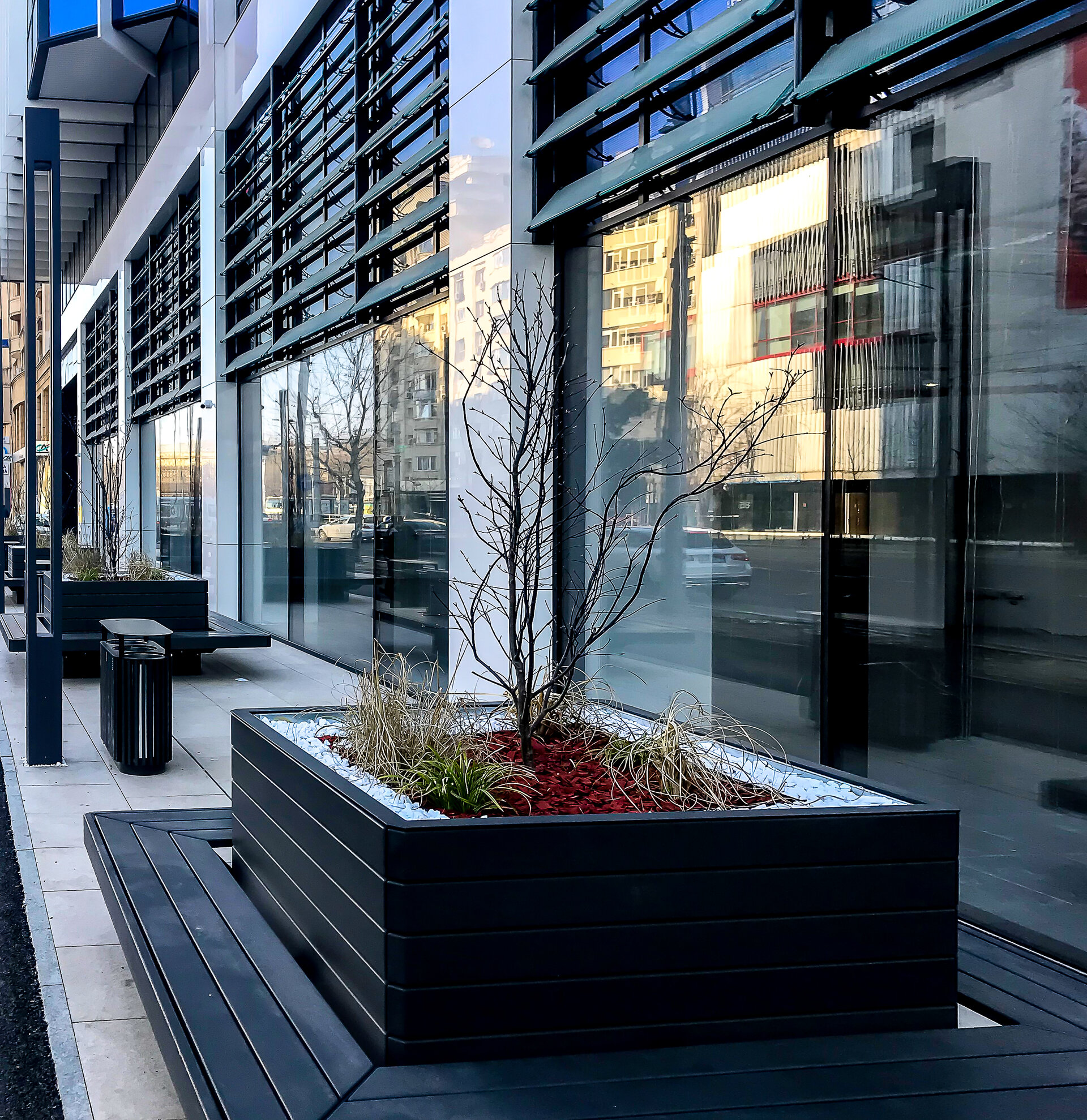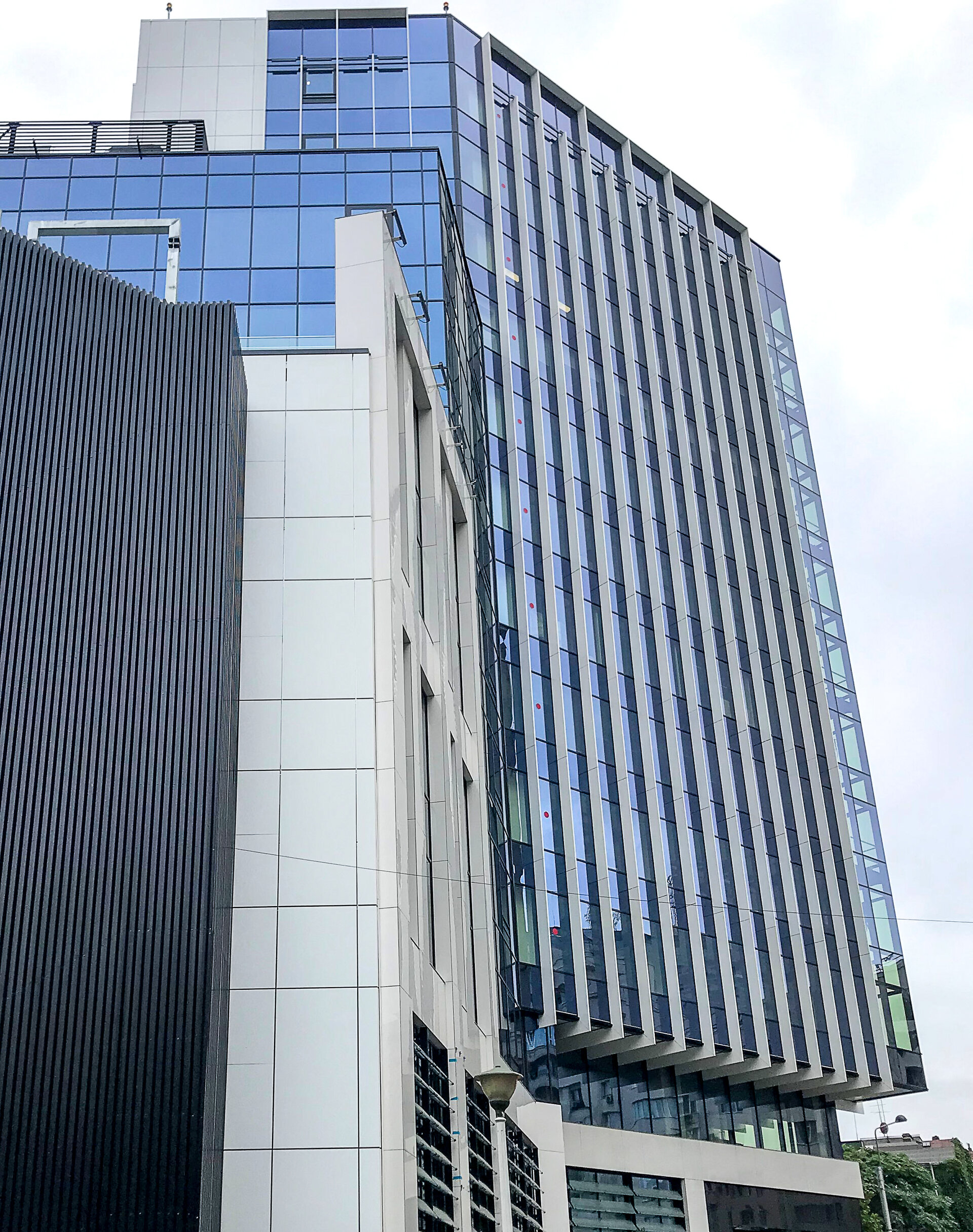
- ALLBIM NET Distinction
Buzești Tower
Authors’ Comment
The building, located in Bucharest on one of the main boulevards, already known since the time of its execution as "BUZESTI TOWER/TIRIAC TOWER", finally completes the alignment of Calea Buzesti in the sector between Strada Sevastopol and Piata Victoriei. On the plot which had been vacant for more than 25 years, a commercial building was completed, with office, services and retail spaces, having 5 basement levels and a ground floor with 12 floors in the main body.
The building, finished in 2021, completes a list of works that the authors created in the spirit of the specific architecture of the 1920s-1940s and through which they aimed to revive the spirit of modernist and avant-garde Bucharest of those years, respectively Bucharest Art Deco.
Just like the ARO building, located on the main axis of the city, the architects propose a balanced composition, with a dominant "corner" volume connected by lateral segments to the neighboring buildings’ cornices and alignments. In the composite, complex and heterogeneous urban fabric, a stylistic union/fusion is proposed between the architectural language with references to Art Deco - the "radiator" type slatting that accentuates the building’s slenderness, the "proper" and discreet solid/void architecture - and the technological topicality.
The reference to art deco architecture can also be noted through the treatment of the access areas in the building, amplifying the space through the corner portal and the double-height access hall. The transparency of the glazed ground floor, with reference to the use of facade elements with curved glass - common in those years, allow the pedestrian to feel the attraction of the building. The black and white color range used both in the treatment of the facades and the interior spaces is also a reference to the chromatic line of the beginning of the 20th century.
Although it is an "alignment" building, continuing the existing fronts, the developer, at the proposal of the architects, decided to offer the city an esplanade, modernly equipped and furnished, along the facade towards the main street, acting as a protective space for pedestrians.
A difficult project that, due to the requirements of the theme, budget and permitting, called for the design team’s entire professionalism, capacity and experience. It was the work of a large and complex team coordinated by the architects and the client's representatives
Finally, we hope that the project offers an image with a specific "flavor" of the 30s, constructed with cutting-edge technologies respecting high standards of sustainability and European quality both in design and execution.
- ROSETTI Aparthotel
- Romanian Orthodox Ecclesiastical Center in Munich
- Nura
- Rapid Stadium - Giulești
- Tandem Office Building
- Rădăuți Lawcourt
- Buzești Tower
- Olga Gudynn Int'l School
- Lotca
- Retrofitting Dentamerica headquarter
- DestinyPark - a world ruled by children
- The fairytale kindergarten
- Two-Floor CLT office building
- Panduri 40 Boutique Offices
- Timisoara Convention Center
